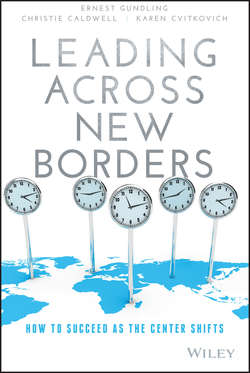Читать книгу Leading Across New Borders - Karen Cvitkovich - Страница 8
На сайте Литреса книга снята с продажи.
CHAPTER 1
THE SHIFTING CENTER: EMERGING MARKETS HAVE EMERGED
Common Leadership Tasks
ОглавлениеIngrid (promotion postponed), Alan (air filters), and Huang (failed assignment), are each high-potential future leaders who have held important roles in vital markets. Their performance is critical to their multinational employers, but they are struggling. What could each of them do to have a better chance of success? And what could their organizations do to make success more likely?
Leaders in organizations everywhere must find ways to grow their businesses, to make them more efficient, and to develop employee capabilities. They need to leverage the best talent, bridge differences, run teams, engage diverse employees, integrate mergers and acquisitions, innovate to create new hit products or services for customers, and make difficult ethical choices on behalf of the organization.
Given the differences in culture, languages, time zones, and institutions inherent in global business settings, these common leadership tasks become significantly more complex and demanding. Leaders at all levels must work within matrix organizations that seek to balance the interests of business lines, functions, and geographical regions. They are also likely to have less direct authority, less accurate information, broader responsibilities, and significantly more stakeholders.12
Most writings on leadership focus on competencies – that is, individual skills or characteristics that allegedly produce better results. Leading Across New Borders focuses primarily on specific tasks that leaders like Ingrid, Alan, and Huang must accomplish. It answers the question: What does each of them need to do in order to succeed in cross-border contexts, with many stakeholders and little or no “command and control” authority?
Global leaders have to carry out their tasks within several contexts: self and other, team, and organization. Subsequent chapters will examine standard best practices for each task, point to the limitations of current leadership models as the world changes, and offer new ideas and approaches. Each leadership task – displayed in Table 1.2 – must be handled with an awareness of how we can alter pre-existing paradigms to reflect new realities.
TABLE 1.2 Global Leadership Tasks
12
“The Global Leader,” Corporate Leadership Council (CLC) Human Resources, Corporate Executive Board, Executive Briefing, February 2012.
